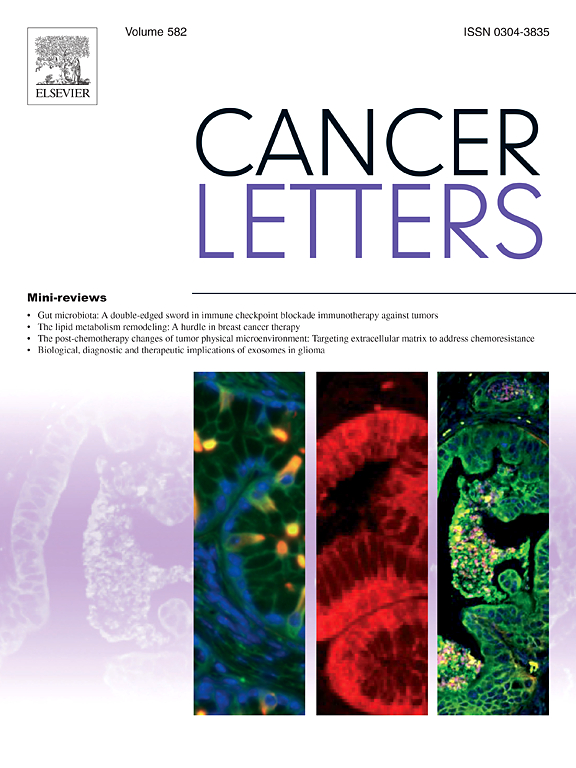Anticancer therapy-induced peripheral neuropathy in solid tumors: diagnosis, mechanisms, and treatment strategies
IF 9.1
1区 医学
Q1 ONCOLOGY
引用次数: 0
Abstract
Anticancer therapy-induced peripheral neuropathy (PN) is a common adverse event during the diagnosis and treatment of solid tumors. The drug class, cumulative dose, and individual susceptibility affect the incidence and severity of PN. Owing to the lack of specific biomarkers and imaging tests, the diagnostic criteria for PN remain unclear. Moreover, the available and effective clinical treatment strategies are very limited, and most of the current drugs focus on symptom management rather than fundamental reversal of the disease course. The morbidity mechanisms of PN are diverse, including direct neurotoxicity, mitochondrial dysfunction, and disruption of axonal transport. Here, we summarize the diagnosis, mechanisms, and neuroprotective strategies of PN and discuss potential intervention treatments.
实体瘤抗癌治疗诱发的周围神经病变:诊断、机制和治疗策略。
抗癌治疗引起的周围神经病变(PN)是实体瘤诊断和治疗过程中常见的不良事件。药物类别、累积剂量和个体易感性影响PN的发生率和严重程度。由于缺乏特异性的生物标志物和影像学检查,PN的诊断标准仍然不清楚。此外,可用和有效的临床治疗策略非常有限,目前大多数药物侧重于症状管理,而不是从根本上逆转病程。PN的发病机制多种多样,包括直接神经毒性、线粒体功能障碍和轴突运输中断。在这里,我们总结了PN的诊断、机制和神经保护策略,并讨论了可能的干预治疗。
本文章由计算机程序翻译,如有差异,请以英文原文为准。
求助全文
约1分钟内获得全文
求助全文
来源期刊

Cancer letters
医学-肿瘤学
CiteScore
17.70
自引率
2.10%
发文量
427
审稿时长
15 days
期刊介绍:
Cancer Letters is a reputable international journal that serves as a platform for significant and original contributions in cancer research. The journal welcomes both full-length articles and Mini Reviews in the wide-ranging field of basic and translational oncology. Furthermore, it frequently presents Special Issues that shed light on current and topical areas in cancer research.
Cancer Letters is highly interested in various fundamental aspects that can cater to a diverse readership. These areas include the molecular genetics and cell biology of cancer, radiation biology, molecular pathology, hormones and cancer, viral oncology, metastasis, and chemoprevention. The journal actively focuses on experimental therapeutics, particularly the advancement of targeted therapies for personalized cancer medicine, such as metronomic chemotherapy.
By publishing groundbreaking research and promoting advancements in cancer treatments, Cancer Letters aims to actively contribute to the fight against cancer and the improvement of patient outcomes.
 求助内容:
求助内容: 应助结果提醒方式:
应助结果提醒方式:


